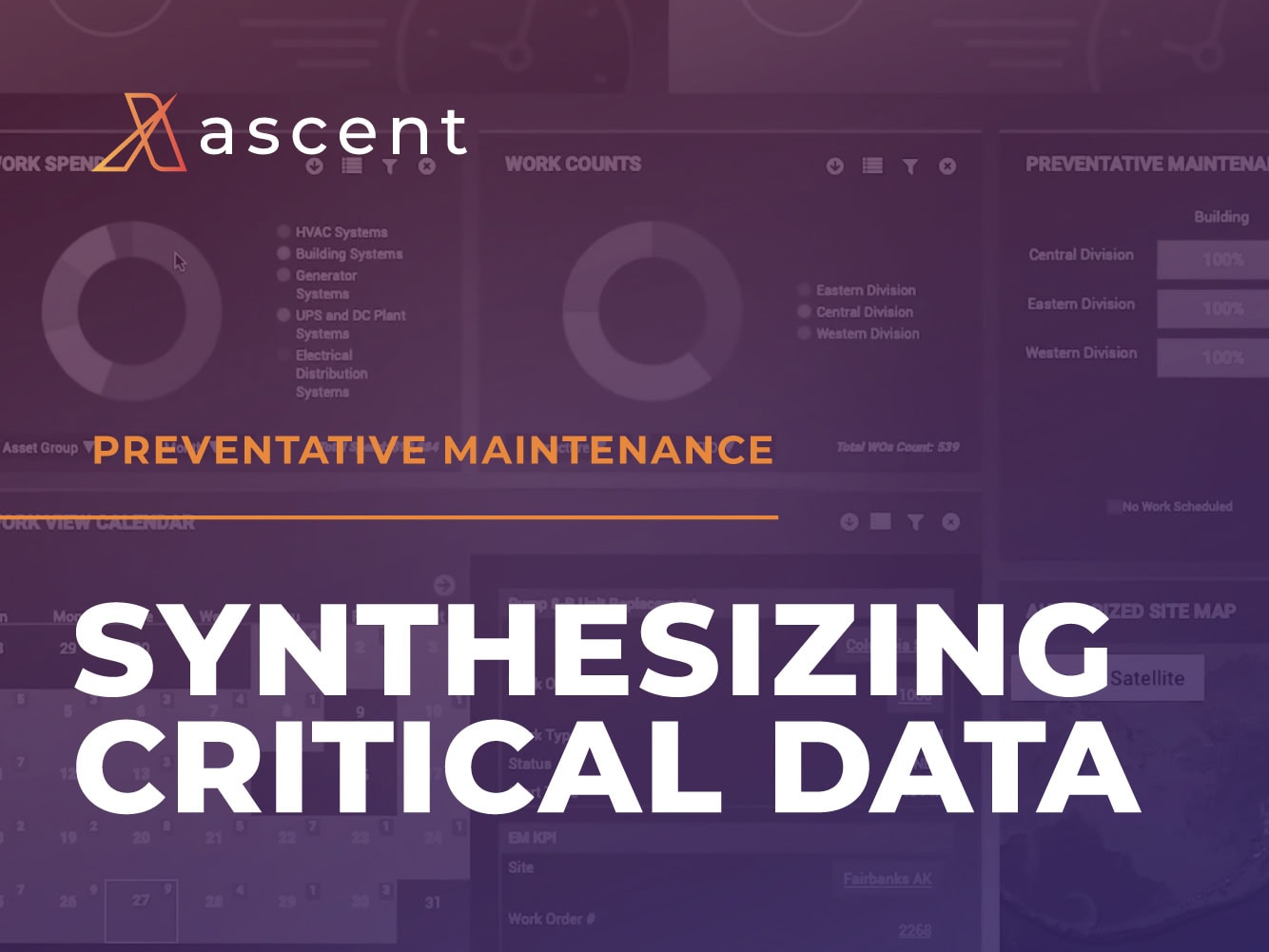Welcome to our latest three-part blog series, where we delve into the depths of mission critical preventative maintenance (PM). Throughout this series, we will provide simple, actionable ways to improve current-state maintenance programs.
First up — data. When crafting preventative maintenance (PM) plans, the more data that is available, the better. However, a lack of industry-wide data in the mission-critical space can lead to inefficiencies in the execution of PM plans.
The Challenge: Limited Access to Critical Data
One of the key challenges around data aggregation for PM programs lies in the fact that each equipment manufacturer tracks performance and repair data for their own products. When it comes to the range of equipment types in a critical facility, there is no common repository of equipment performance and repair data available to other manufacturers or end users.
In cases where manufacturers do make troubleshooting information for component and equipment failure available, it may not provide enough specifics to effectively make use of it at the site level without additional guidance from engineers. Even companies with large data center portfolios may not have knowledge of how similar sites outside of their domain are performing. Individual and multisite operators typically only have visibility into issues with their own equipment.
This translates into a curious lack of consolidated data specific to PM standards being available to the data-center service industry. Without such a resource, local engineers and manufacturers solve problems as best they can using the limited information available to them.
Customization Is a Start
In the absence of industry-wide performance data, mission critical operators must rely on capturing as much internally generated information as possible. Considering the above challenges, designing and implementing data-centric mission critical PM program calls for a different mindset — one that goes beyond a traditional maintenance program. A more efficient strategy begins with:
- Understanding the facility and its goals
- Setting performance standards
- Documenting procedures and schedules
- Properly engaging the CMMS
The latter is the first step in effectively capturing operational equipment data — the centerpiece of any efficient program.
There are two broad areas of data collection to consider: machine-led and personnel-led. The advantage of the former is that it is continuous and does not require labor. BAS and DCIM systems are at-the-ready, capturing and monitoring steady-state conditions.
On the other hand, personnel-led data collection captures observations only a human can see or hear, due to proximity, ongoing exposure and during maintenance activities. Operations personnel continuously monitor their spaces and equipment; thus, they can often detect the slightest change in a particular piece of equipment. While these may not trigger a full evaluation of the PM program, subtle variances can be noted and followed over time.
The Best of Both Worlds in Data Aggregation
Optimally, data collection should be a synthesis of both machine- and personnel-gathered information. Therefore, it is important to store all data captured for operational equipment through automated monitoring and human observation into a single system.
Ascent’s Navigator platform assembles information for equipment asset groups while providing key insights into maintenance activities, equipment performance, asset health, and service costs. Additionally, the platform captures failure causes, operational observations, and trend results into a comprehensive data aggregator that allows for more effective management and maintenance of the critical environment.
Rather than relying solely on machine- or personnel-driven insights, this synthesis of critical data inputs allows for a more comprehensive and intuitive PM paradigm. This holistic approach provides managers and onsite personnel with a far deeper look into the state of mission critical equipment and more precise tools for implementing PM programs.
For more information about preventative maintenance scheduling, download our new whitepaper, or sign up for our newsletter to stay in the know.
